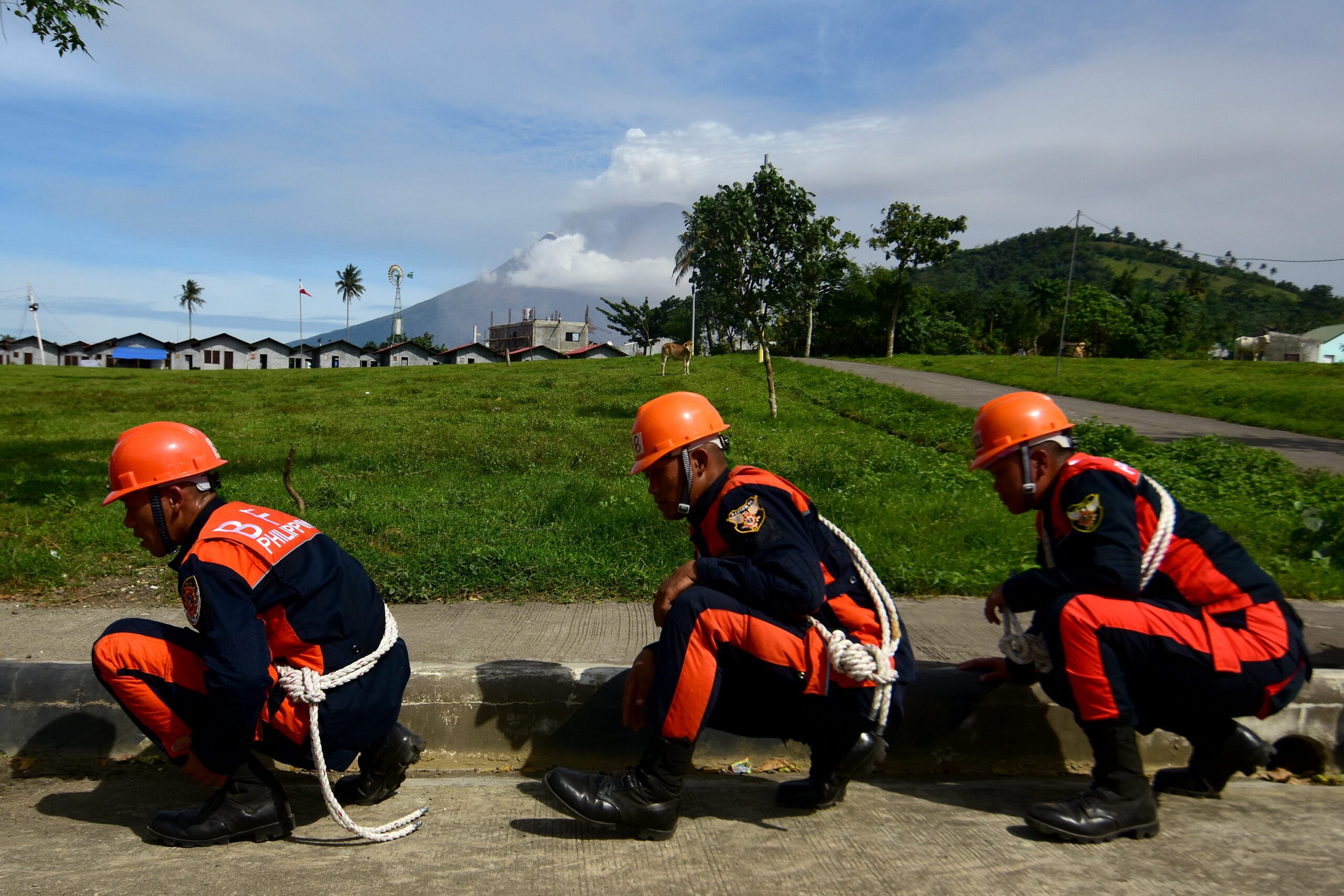SUMMARY
This is AI generated summarization, which may have errors. For context, always refer to the full article.

ALBAY, Philippines – The Philippine Institute of Volcanology and Seismology (Phivolcs) in Bicol warned on Monday, February 5, Mount Mayon continues to pose high risk, despite its seeming calmness the past days.
“Mayon volcano is still far from the peak eruption as new magma within the belly or beneath the volcano is pushing to the crater,” said Ed Laguerta, Phivolcs resident volcanologist chief here.
“The molten materials ejected by Mount Mayon today even surpassed the previous volcanic materials erupted in the past. Until the Philippine trench is active, the Mayon will continuously produce and generate new magma,” he added.
Laguerta said geodetic engineers from the Phivolcs central office will conduct another round of survey to understand Mayon’s behavior.
The volcano has ejected more than 50 million cubic meters of materials since January 13, he said.
Evacuation centers are now housing 19,520 families, or 75,325 individuals, from 3 cities and 6 municipalities in Albay: Legazpi, Ligao, Tabaco, Guinobatan, Camalig, Daraga, Sto. Domingo, Bacacay and Malilipot.
Longer stay in evacuation centers
Cedric Daep, chief of Albay Public Safety Emergency and Management Office, said that, since alert level 4 is still up, families may need to stay in evacuation centers for several months, although some evacuees in the 9-km extended danger zone were sent home to prevent disease outbreaks in the evacuation centers.
Even if the alert level is lowered to 3, Daep said, evacuees within the 6-7-kilometer danger zone would still need to remain in evacuation camps for safety.
“We don’t know how many months the volcano will erupt, but the longest so far was in 1984, when evacuees stayed for 4 months,” Daep said. – Rappler.com
Add a comment
How does this make you feel?





There are no comments yet. Add your comment to start the conversation.